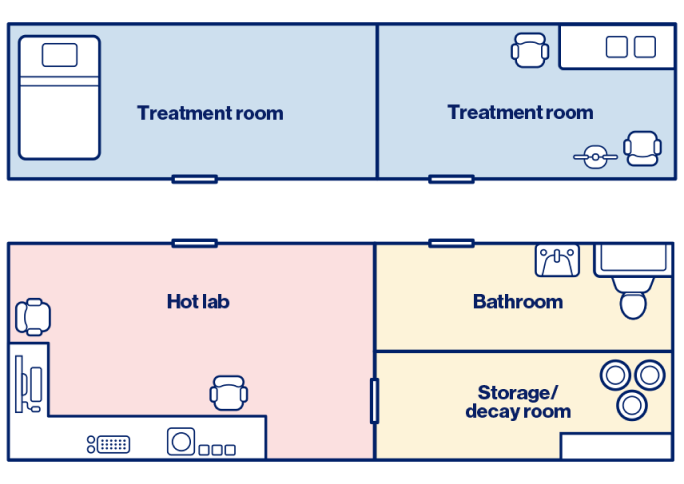
Facilities and equipment
This section of the Novartis RLT Institute reviews the considerations in setting up the facilities and equipment required to provide radioligand therapy (RLT).
Facility shielding
Special considerations
Room size and location
When designing shielding for RLT facilities, it is important to consider the location and dimensions of the treatment rooms. If larger rooms are available, shielding may not be necessary, as the distance from the radiation source can significantly reduce exposure. Applying the inverse square law, the transmission of gamma photons will be minimal at a distance of approximately 4 meters.1,2

However, if smaller rooms exist and are in proximity to uncontrolled areas, shielding might be needed.3 That said, by employing appropriate shielding, the number of patients treated can be significantly increased without increasing the radiation exposure to the general public.
Other existing barriers can be considered. For example, a 9-inch brick wall with 6-inch concrete is generally adequate shielding for most nuclear medicine modalities, except for PET facilities, which utilize high energy 511 keV annihilation photons.1,4,5 In comparison, 177Lu emits photons with highest energy of 208 keV.6,7
ALARA principle
Always adhere to the ALARA (as low as reasonably achievable) principle. The main purpose of ALARA is to protect employee health and establish a safe working environment. ALARA regulatory guidelines reduce workers' exposure to radiation through three main principles8:
Time: Time: Minimize the time spent near the source of radiation to limit unnecessary exposure by working efficiently and leaving the area as soon as possible8
Distance: Maximize the distance between workers and the source of radiation. As distance increases, the dose of radiation decreases. In fact, the inverse square law states that doubling the distance from a point source of radiation reduces the dose rate four times less than it was at the original distance from it8,9
Shielding: Place a barrier between workers and the radiation source to greatly limit exposure8
